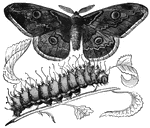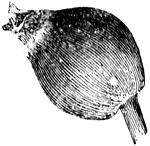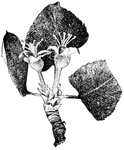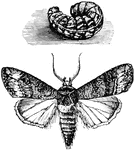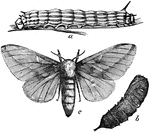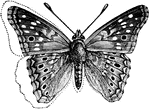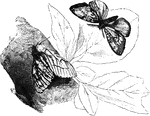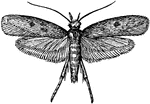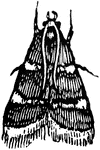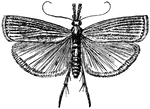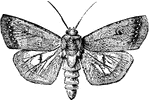
Cecropia Moth
This moth has large wings, measuring five to six inches from tip to tip. It is found all across the…

Hawk Moth
The hawk moth is well known by its habit of poising like a humming bird over the flower from which it…

Hawk Moth
The hawk moth is well known by its habit of poising like a humming bird over the flower from which it…

Hawk Moth
The hawk moth is well known by its habit of poising like a humming bird over the flower from which it…

Acorn-moth
"a, larva within acron; b, acorn infested with the larva; c, head and thoracic segments of larva; d,…
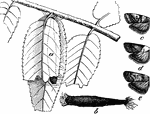
Acrobasis
"a, leaflets attacked by a larva of A. juglandis; b, case of larva; c, wings of A. nebulo; d, wings…
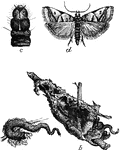
Acrobasis
"a, case containing caterpillar; b, cases in winter; c, head and thoracic joints of larva, enlarged;…

Death's Head Moth
"The most remarkable species is the Death's Head Moth, Acherontia Atropos, a large kind,…
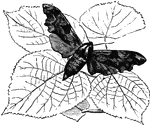
Lime-tree sphinx
"The Lime-tree sphinx, Sphinx tiliae, has the wings denticulated and angular; it is nocturnal,…
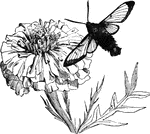
Hummingbird Moth
"A considerable number of insects belonging to Sphingina have transparents wings. Among them is the…

Silkworm Moth, Caterpillar, and Chrysalis
"This important insect is a native of the north of China; and a great portion of the supplies of silk…

Chrysalis of the Luna Moth
"Among the larger and more splendid moths of our own country is the Luna Moth, or Green Emperor Moth,…

Luna Moth
"Among the larger and more splendid moths of our own country is the Luna Moth, or Green Emperor Moth,…

Caterpillar of the Luna Moth
"Among the larger and more splendid moths of our own country is the Luna Moth, or Green Emperor Moth,…

Cecropia Moth
"The Cecropia Moth, A. Cecropia, is of a dusky reddish-brown; the wings expand six inches,…
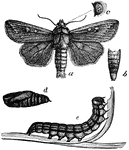
Army Worm
"Army-worm (Leucania unipuncta), about natural size. a, male moth; b, abdomen of female; c, eye; d,…

Death's Head Moth
"The Death's-head Moth is the European Acherontia Atropos, a hawk-moth with markings on the thorax resembling…

Death's Head Moth Caterpillar
"The Death's-head Moth is the European Acherontia Atropos, a hawk-moth with markings on the thorax resembling…
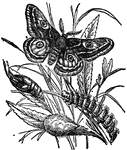
Emperor Moth
"The Emperor Moth, the general color greyish, with white hairs and purple tinges; wings with a hinder…
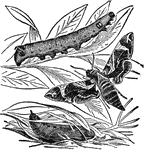
Hawk Moth
"Hawk Moth is a family of the lepidopterous insects, forming along with the clear winged moths and the…

Carpet Moth
Cidaria, a genus of moths characterized by having oblique bands with acute angles across the front wings.

Moth
The wings are long; the primaries blunt; the secondaries small. The thorax is square with a central…
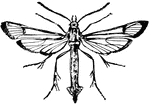
Clear-Winged Moth
"These are wasplike moths of brilliant colors and have transparent wings. They generally fly by day."…

Moth
Lepidopterous insects, which are distinguished from butterflies in that the antennae taper to a point…
Body-budding
This illustration shows a tree that has been body-budded. It has two buds that had been killed by bud-moth…







